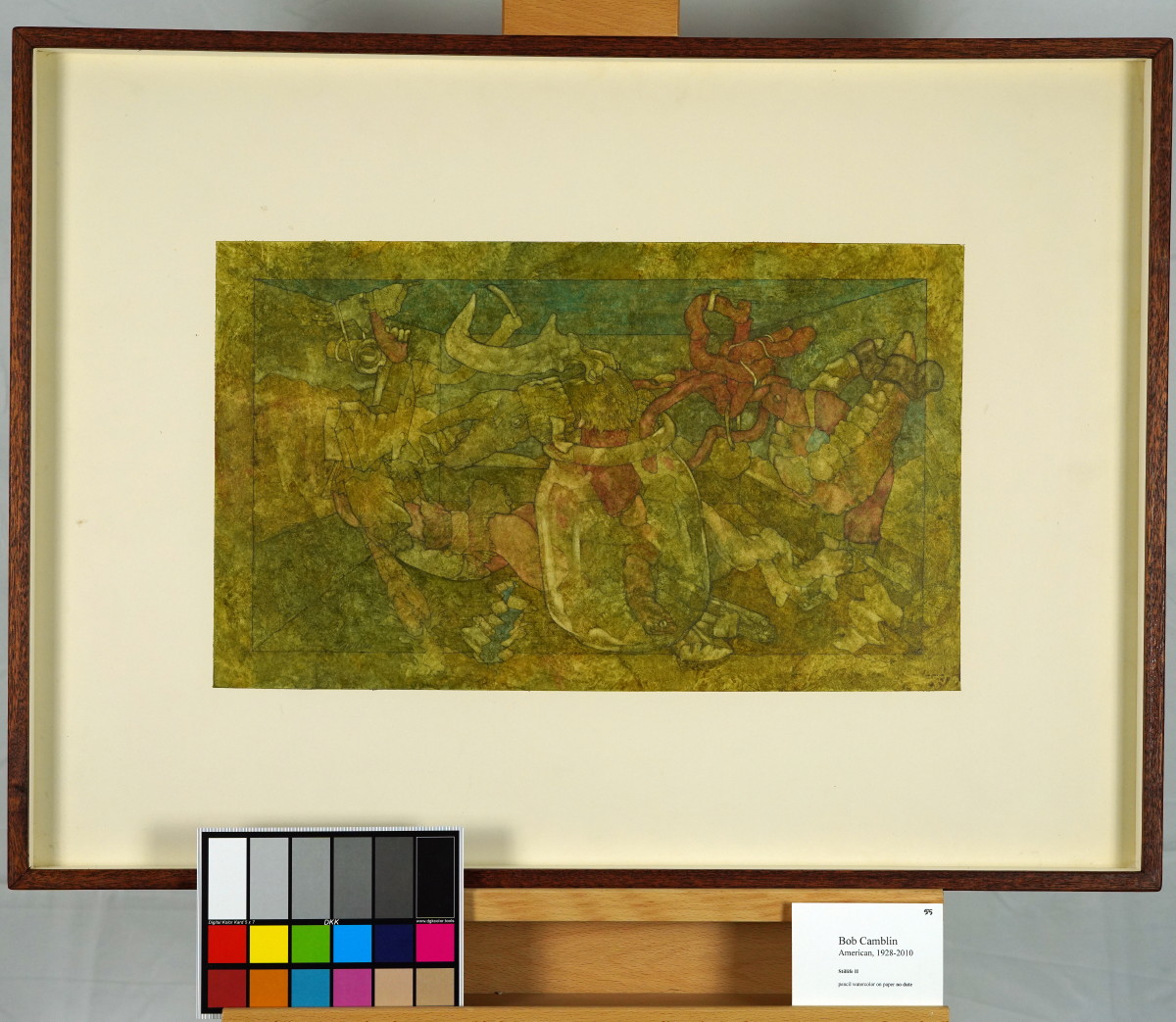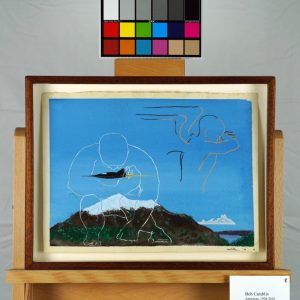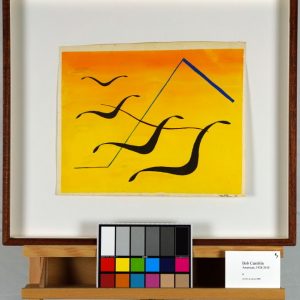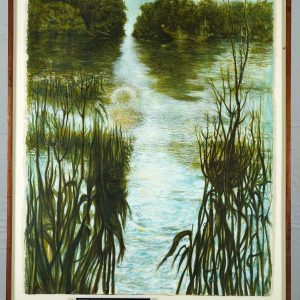Description
Still Life II, no datePencil/watercolor
Signed
12 x 20 in. (image)
22.75 x 30.75 (frame)
original, includes certificate of authenticity from ArtTrust
The painting “Stillife II” displays a chaotic scene composed of various organic and mechanical forms that intertwine in an almost surreal manner. There are disjointed, tentacle-like appendages, chains, and remnants of animal-like figures fused with mechanical elements. A glass jar in the foreground appears to encapsulate parts of this chaotic assembly, adding a sense of confinement to the otherwise sprawling composition. The color palette is dominated by earthy tones, with occasional highlights of red and purple that draw attention to specific details.
From a Zen perspective, this artwork could symbolize the struggle to find harmony in a world filled with conflicting elements. The mixture of organic and mechanical forms suggests a tension between nature and human-made structures, which echoes the Zen philosophy of embracing paradoxes and accepting the interconnectedness of all things. The jar, possibly serving as a container for chaos, might represent the mind’s attempt to confine or comprehend the boundless nature of existence. In Zen, the idea of “letting go” and allowing the mind to flow without attachment can be seen in the tension created by the artwork’s elements being both trapped and liberated.
In I Ching terms, this composition could relate to Hexagram 49, “Revolution (Molting).” The chaotic forms and merging of different elements may symbolize a transformative process, where old structures dissolve to make way for something new. The act of being encased within a jar, while still connected to external chaos, could reflect the dual nature of transformation—internal stillness amidst external change. The hexagram advises patience and acceptance during times of upheaval, mirroring the artwork’s representation of complex, intertwined transformations.
The artwork captures a state of flux where various life forms, technology, and organic matter blend together in a grotesque harmony. It reflects a world on the edge of change, where the boundaries between nature and technology have become indistinguishable. The jar may symbolize the human desire to contain, categorize, and understand the complexities of life, while the chaotic external elements represent forces beyond human control. Together, these elements suggest a meditation on the inevitability of change, the dissolution of barriers, and the interconnectedness of all things—a core principle in both Zen and I Ching philosophy.
Stylistically, this piece draws inspiration from surrealism, with hints of expressionism in the distorted forms and intense emotional impact. The blending of organic and mechanical elements is reminiscent of the works of H.R. Giger, who explored the fusion of technology and biology in his art. Additionally, there is a Dadaist influence in the seemingly arbitrary and chaotic arrangement of the elements, challenging traditional notions of form and composition. This piece could also be seen as an exploration of post-modern themes, particularly the deconstruction of binaries such as nature versus technology, chaos versus order, and confinement versus freedom.
*Shipping cost will vary, please inquire at sales@camblingallery.com before purchasing.
Currently ships from Oregon, USA
Member of artnet? Apply for a discount! Inquire about intergallery and permanent loans for museums.
“Still Life II” was featured in his Yes Retrospective
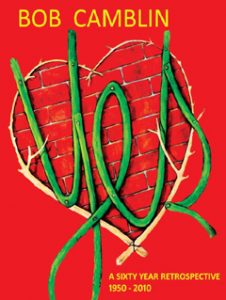
Reproductions of this drawing are available in multiple sizes!
Click here to use our high-resolution viewer!
This artwork is available with a non-fungible token to ensure traceability and transparency of provenance.
The royalty factor – Unlike traditional artworks, such as paintings, mosaics, statues, and the like, NFTs can be programmed to provide royalties to you every time the painting (and token) is sold and resold – for eternity. That mind-bending Camblin you sold could be worth millions one day and provide income for your great-great-great grandkids!
Anti-forgery – The central idea underpinning NFTs is that they are built on the blockchain, which is meant to offer advanced security. Think of it like an un-erasable and un-avoidable copyright.
Easy authentication – Another compelling aspect of NFT art and NFTs in general is the ability to quickly and easily authenticate items, as the record of ownership is scrupulously kept on the blockchain.
